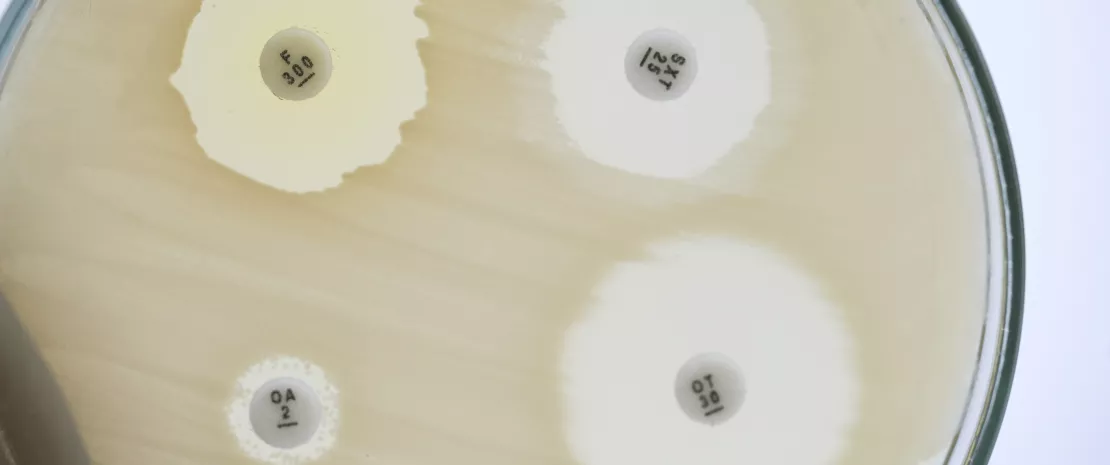Discovery of a “grey area” between bacteriostatic and bactericidal antibiotics
By attacking commensal bacteria as well as pathogens, antibiotics disturb the balance of the gut flora. These collateral effects are well known. However, little is known about the specific activity of each class of antibiotics on the different bacterial species of the gut microbiota. A study published in Nature1 has filled in the gaps.
Sources
This article is based on scientific information

About this article
Drugs have a major impact on the microbiota. In particular, antibiotics attack both pathogenic and commensal bacteria. They are known to modify the balance of the flora and cause digestive disorders such as diarrhea and Clostridioides difficile infection. In the longer term, they can contribute to allergies and metabolic disorders. To understand more precisely how different classes of antibiotics disturb the balance of the gut microbiota, German researchers analyzed the effects of 144 antibiotics on the growth and survival of 27 commensal microorganisms, including several species of Bacteroides.
Three bacteriostatic antibiotics with bactericidal action
By analyzing 815 combinations of antibiotics and commensal species, the researchers were able to observe the different behaviors of antibiotics according to their class. For example, from first- to fourth-generation quinolones the spectrum of activity broadened, with the latter inhibiting almost all the commensal species tested, while macrolides inhibit all species except C. difficile. Eight out of nine tetracyclines inhibit almost all commensal species, which is surprising since the gut microbiota is considered a reservoir of tetracycline-resistant genes. Even more surprising was that erythromycin, azithromycin, and doxycycline, although classified as bacteriostatic, showed a rapid bactericidal effect on 12 commensal species in almost half of cases. The decrease in survival, of more than 99.9%, was confirmed by a viability test on Bacteroides vulgatus and a strain of Escherichia coli.
Antibiotics are an extraordinary scientific discovery that saves millions of lives but their excessive and inappropriate use has now raised serious concerns for health, notably with antibiotic resistance and microbiota dysbiosis. Let’s take a look at this dedicated page:
The ambivalent role of antibiotics
What is the World AMR Awareness Week?
Each year, since 2015, the WHO organizes the World AMR Awareness Week (WAAW), which aims to increase awareness of global antimicrobial resistance.
Held on 18-24 November, this campaign encourages the general public, healthcare professionals and decision-makers to use antimicrobials carefully, to prevent the further emergence of antimicrobial resistance.
Antidotes to minimize impact of antibiotics on commensal bacteria
These observations challenge the long-standing distinction between bactericidal and bacteriostatic antibiotic classes and provide a possible explanation for the strong effect that macrolides have on the gut microbiota. However, the researchers did not stop there. They also screened their database of 1,200 drugs to find whether any had an “antidotal” effect against the bactericidal activity of erythromycin and doxycycline on commensals, without preventing the activity of these antibiotics against pathogens. Fifteen drugs were found to be of interest. The scientists tested them at different concentrations on a synthetic microbial system and on an animal model containing twelve commensal species. The result: ten drugs strongly protected commensals, the most powerful of which were dicoumarol, benzbromarone, and two non-steroidal anti-inflammatory drugs, tolfenamic acid and diflunisal.
The study thus sheds new light on the activity of antibiotics while indicating promising strategies to reduce their adverse effects on the gut microbiota.












